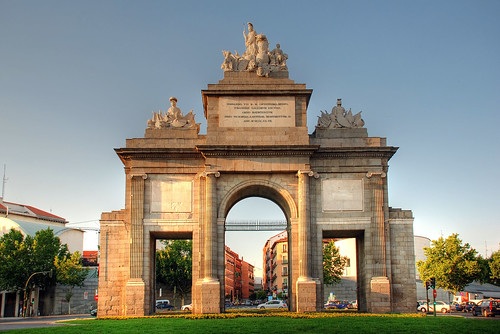
Ciudad Real, is in the country of Spain, on the condition of being capital of Castilla-La Mancha, its strategic location makes the city more typically Mancha regional capitals. Examples of this definition on the dozens of monuments representing meaning that permeate the area.
The villages consist of large area another great feature of the area. Alcazar de San Juan, and its typical windmills Almaden, an important mining center dedicated to the extraction of mercury; Viso del Marqués, with the charm of its Spanish Navy Museum, Campo de Calatrava, with the castle of the powerful Military ; Villanueva de los Infantes and Almagro.
There are many historical and cultural sites that might arouse the interest of the traveler, however this will go as reviewing on these lines, we begin our virtual tour at the Puerta de Toledo, who is in the process of restoration. In 1975 he was named a National Monument and represents an archetype of the XIV century military structure. King Alfonso X ordered it built, and was installed there, displaying a full view of everyone, six pointed arches (about half adjacent columns), intermediate horseshoes, and Gothic interiors. In its in two tranches to rest a groin vault, separated by the space devoted to rake.

On one of the pointed arches, a coat of arms of Castile and saw the wall, inside, an inscription shows the possible completion date: 1328 or so. Today, this ultimate symbol of the Royal City is in the process of restoration, redevelopment and rehabilitation. Both the mayor of Ciudad Real, as a team of government infrastructure, believe the project closed in 2011.
While fix the wall, the work will not involve reconstruction because of re-arming, lose its original essence and sense of conservation. It is believed that, in this way, the site declared a cultural asset, may still be retained for a long time to maintain the condition that it as important heritage.
Like any important place, this city is also home to the cathedral, the first step of this Trail. The church Nuestra Senora del Prado (Romanesque) was completed in the nineteenth century, and has a magnificent altarpiece (1616), built by sculptor Giraldo de Merlo.
The narrow paths of the city, this time lead us to the Church of San Pedro, a Gothic edifice built by the Knights of the cream of the Royal City. Later on you can visit the Casa del Arco, the first city council of Ciudad Real. There, a two storey building of XV century, presents itself as the oldest structure in town.
The casino is a classical style building in which the frames are highlighted, and ways of its links decorative plants. Clearly more contemporary, is the City Hall. Finished work in 1976, is of inspiration from neo-Gothic architecture of the Low Countries.

St James’ Church dates from the late thirteenth century, and both its exterior and interior, you can find features (in murals and capitals) to expatiate different styles and shapes.
In the Medrano Palace, behind the facade, the most striking. An archetype of the twentieth century, with elegant colonnaded courtyard, now occupied by the Delegation of the Council of Communities of Castile-La Mancha.
And for a bit of outside life, parks and gardens can be a good option. Jardines del Prado highlights, because of his extensive tours (have fountains and waterfalls) and his beautiful vegetation.
Thus, Ciudad Real is presented as a site for anyone wishing to find a key stage in the forging of the Spanish identity. His Puerta de Toledo, its streets, its churches and buildings account for a rich history that lights in the tourists, recording their spirits will return.
Leave a Reply
You must be logged in to post a comment.
Recent Comments